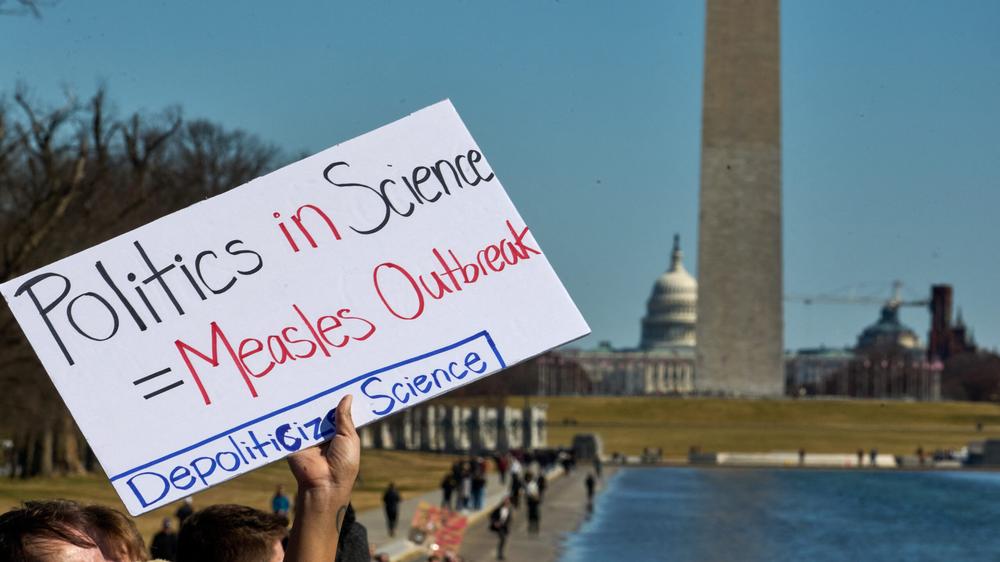It's pretty obvious at this point that the Trump administration is waging a full-scale assault on US science. It has proposed budgets that would be catastrophic, stopped the flow of research funds to a number of universities, and sought to exert unprecedented political control over what funding is distributed. Money has been repeatedly delayed as grants have been checked and rechecked for ideological issues. And all of that is before we get to the instances where the administration has attempted to undermine specific scientific results.
But, somewhat unexpectedly, everything isn't currently dark for US-based scientists, as recent budget appropriations in the Senate have ignored Trump's requests (and budget guidance passed by the Senate itself) and have funded research at levels similar to previous years. That funding may ultimately set up a confrontation between a Congress that wants to fund science, and a president who has little interest in doing so—a confrontation the administration appears to be preparing for.
Project 2025 and science
The President himself appears to be completely indifferent to science, being willing to simply make things up as needed, with no regard for evidence. Instead, most of the attacks on research funding have come from a combination of DOGE and the Office of Management and Budget (OMB). The latter is helmed by Russell Vought, who was one of the people who helped produce the Project 2025 document that outlined many of the actions taken by the new administration.
Project 2025 took a dim view of biomedical research agencies purely on ideological grounds, claiming (falsely) that, "Despite its popular image as a benign science agency, NIH was responsible for paying for research in aborted baby body parts, human animal chimera experiments, and gain-of-function viral research that may have been responsible for COVID-19." Vought has said similar things since. And, more critically, he has acted, attempting to do everything from cutting the payments universities receive to support researchers, to trying to block all funding for research grants made by the National Institutes of Health.
The Project 2025 document outlined additional ideas, such as the elimination of scientific research at the EPA, something that has since occurred. It also suggests that finding solutions to climate change is part of a "partisan political agenda." So, its hostility to scientific findings extended well beyond the biomedical fields.
But what about Congress?
It's safe to conclude that this faction, which is now running the government, views science and scientists as ideological opponents and has been actively seeking to reduce their numbers, both by terminating current grants and eliminating funding for educational programs.
What had been less clear was whether Congress had adopted a similar perspective. In the past, funding for science had enjoyed broad bipartisan support. Even in cases where Republican presidents have attempted to cut back on research for budgetary reasons, Republicans in Congress haven't gone along, in many cases joining with Democrats to provide science agencies with budget increases.
That appeared to come to an end this spring, however, with the passage of Trump's 2026 budget outline by Congress with near-uniform Republican support. That passage made the massive cuts to science proposed by Trump the official US policy, which seemed to indicate that the era of bipartisan support had come to a close.
But the US budget process is somewhat quirky, involving two stages: the first is the passage of a budget that lays out the plans for how to spend money, and the second is the actual appropriation of the money. And, while Republicans voted along party lines to support Trump's priorities in what was termed the Big Beautiful Bill, the Senate has, during the appropriations process, behaved like it was still back in the bipartisan era, with committees choosing to fund science agencies at levels similar to the 2025 budget passed under Biden.
The upcoming fights
Congress' newfound independence when it comes to science comes with a couple of major caveats. The first is that these appropriations votes have mostly taken place in smaller committee votes, rather than before the full Senate. It's possible that this support will wither when higher-profile votes take place. While these specific funding choices would likely receive widespread Democratic support in the closely divided Senate, there's a decent chance that these will be bundled with other budgetary priorities that limit or eliminate Democrats' willingness to go along. And then there's the question of whether this bipartisanship extends to the House, where the shorter terms in office have tended to lead to a chamber with a significantly larger population of radicals.
Ultimately, all of this will also have to be packaged into a budget deal that the administration views as a "must pass," even if some provisions run counter to its priorities. So, a lot of barriers still stand in the way of getting a science-friendly budget passed.
But, in reality, the challenges are even larger than the ones we've laid out here. Because, for the additional funding to actually matter, Congress is going to have to find a way to OMB-proof it.
Through a combination of OMB, DOGE, and agency leadership, the government has now developed a huge range of methods to slow the approval of new grants and the spending on existing ones. STAT has documented everything from ideological litmus tests for grant approval to limits on agency credit cards and how these methods have drastically curtailed the ability of the NIH to spend the money that Congress has allocated to it. Similar things have been reported at other agencies, putting them at risk of not spending their full annual budget. If the money isn't spent, it ultimately expires, which may be the administration's intent here: achieving the budget cuts whether Congress wants them or not.
A recent executive order has both formalized these approaches and expanded them. Under the new rules, peer review is optional, while ideological litmus tests are standard. Grants will be evaluated against arbitrary standards like "in the national interest," and OMB will be consulted on everything. Even if a grant gets approved, it can be cancelled at any point in the future. It provides the administration with the tools needed to slow-walk the spending of any money authorized by Congress.
So Congress can't simply maintain the budget of research agencies and expect that science will be supported as it has been. It has to both allocate the money and set conditions that compel the agencies to actually distribute it.
And these sorts of restrictions set by the executive order have some precedent. For example, the first Trump administration threatened to cut the money paid to universities for maintaining the facilities used by researchers, and Congress responded with language to block this. That language ended up playing a role in the court cases that have blocked this research-hostile policy from taking effect.
Where does that leave us?
So to rescue science in the US, Congress will have to both allocate more money than the administration has asked for and craft language that blocks not only the existing practices and those outlined in the executive order, but also any potential science-funding-inhibiting policies that could potentially emerge from the OMB in the future. And to reiterate, we're not even certain Congress will be willing to just pass the spending at the moment.
Even if Congress does try to limit OMB's ability to interfere with the distribution of research funds, it will likely trigger a showdown with the administration that will end up in court. And, should the case reach the Supreme Court, it's difficult to guess whether the Roberts Court would be willing to limit its expansive view of presidential powers even in the face of extremely clear congressional intent.
All of which leaves the future of science in the US extremely uncertain. While some good news might be coming out of the Senate at the moment, it's only the first step in a long and challenging fight to ensure that the US research enterprise remains funded at the levels that have made it a world leader.

 The new Nissan Leaf is still one of the cheapest EVs in America
The new Nissan Leaf is still one of the cheapest EVs in America